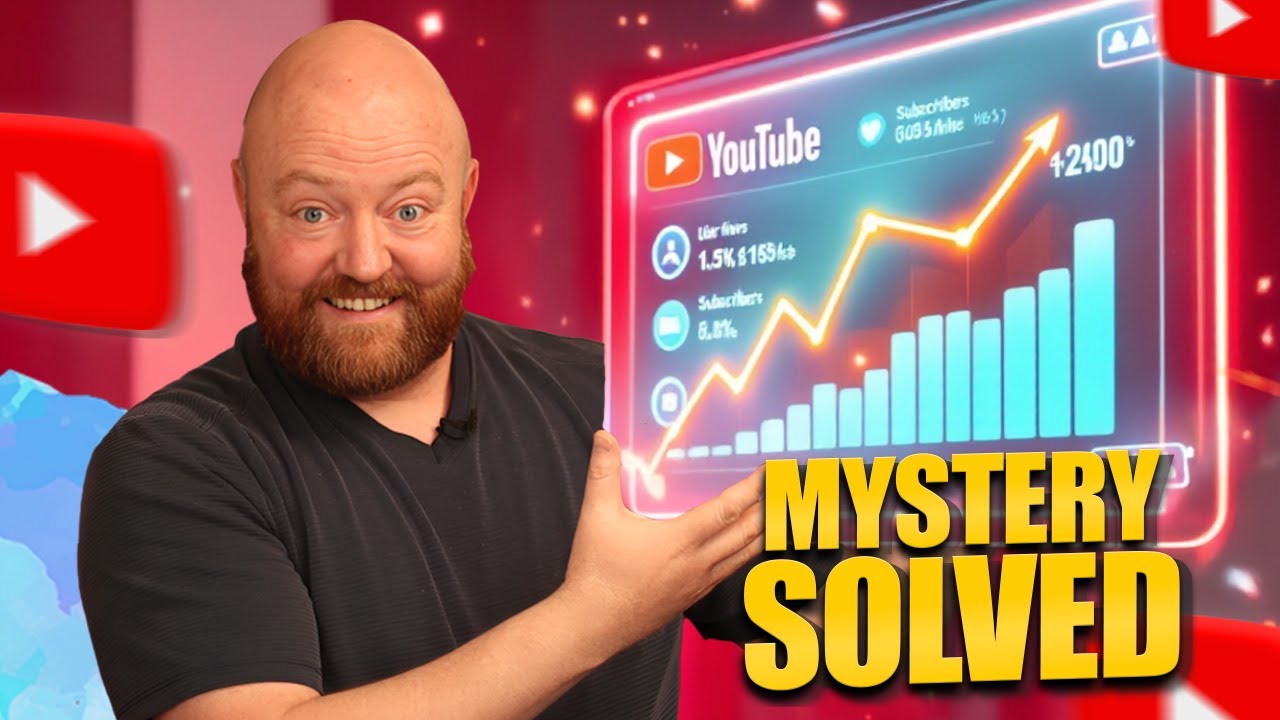Want the YouTube algorithm to work in your favor? Good news – it absolutely can! However, there’s a crucial twist: there isn’t just one YouTube algorithm. In fact, there are multiple, and pleasing one might inadvertently disappoint another.
In this episode, we’ll navigate this complex landscape. I’ll guide you through identifying the YouTube algorithm that matters most for your specific goals and, most importantly, reveal how to make that algorithm a fan of your content. Let’s dive in!
Understanding the Multiple Algorithms of YouTube
To truly make the algorithm happy, you first need to understand which one we’re even talking about. YouTube employs several algorithms, each influencing different traffic sources. Let’s take a look at the analytics of Jason Schroeder’s successful YouTube channel to illustrate this.
By navigating to YouTube Analytics > Advanced > Traffic Source, we can see a breakdown of where his views are coming from. Notice these key traffic sources:
- YouTube Search: This algorithm focuses on matching user search queries with relevant video content.
- Suggested Videos: This algorithm recommends videos to viewers based on what they’re currently watching or have watched in the past.
- Browse Features: This includes traffic from the YouTube homepage, subscription feed, and other browsing areas.
Each of these traffic sources operates with its own underlying algorithm. While YouTube states they have “many different algorithms,” for our purposes, we can broadly categorize them into two main types:
- The Search Algorithm: Focused on matching content with search queries from users actively looking for information.
- The “Viral” or Suggested Algorithm: Aiming to push engaging content to a wider audience through suggestions and browsing features.
The Crucial Choice: Appealing to One Without Disappointing the Other
Here’s the key insight: content optimized for the search algorithm (attracting new viewers searching for your expertise) can often differ significantly from content designed to go viral or appeal to the suggested algorithm.
Creating highly specific, search-optimized videos might not resonate as strongly with your existing subscribers who discover your content through browse features. Conversely, chasing broad, trending topics for mass appeal might not attract the targeted audience actively searching for your niche expertise, hindering lead generation.
Different Content, Different Strategies
It’s vital to align your content strategy with the primary algorithm you want to please. Let’s break down the content types that tend to perform well for each:
- Suggested Traffic: To please this algorithm, focus on creating content with mass appeal, sensationalism, shareability, and trending topics – videos that are inherently exciting and grab attention.
- Browse Traffic: If nurturing your existing subscribers is your priority, let your YouTube Analytics be your guide. Analyze your best and worst-performing videos, understand your audience demographics (age, gender, location), and create content specifically tailored to their interests. You’ll often find that browse traffic has a higher retention rate.
- Search Traffic: This is the most targeted approach. Each video should focus on answering a specific question that your ideal audience is actively searching for. While this is excellent for attracting new, highly qualified leads, it might occasionally bore your existing subscribers.
A Clever YouTube Feature to Navigate This Dilemma
So, how do we cater to both potential new viewers from search and our loyal subscribers? YouTube offers a helpful feature. When scheduling or editing a video, under “Show More,” you’ll find a section where you can choose not to notify subscribers about a specific video.
This is incredibly useful for those highly targeted, search-optimized videos. By leaving this box unchecked, you ensure that your subscribers, who might not be interested in this specific niche topic, won’t be spammed with a notification. This allows you to create content specifically for search without potentially annoying your existing audience.
Pick Your Lane and Make That Algorithm Your Ally
Ultimately, understanding that there are multiple YouTube algorithms is the first step. The next crucial step is to choose your primary focus. What is your main goal? Are you prioritizing reaching a broad audience for brand awareness, or are you focused on attracting targeted leads through search?
Once you’ve identified the traffic source that’s most important for your objectives, you can tailor your content strategy to please that specific algorithm.
To help you further in this decision-making process, I’m linking another episode right here: “Which Traffic Source Is Best for YouTube?” Go watch that video now so you can confidently choose your lane and make the right YouTube algorithm your biggest supporter.




